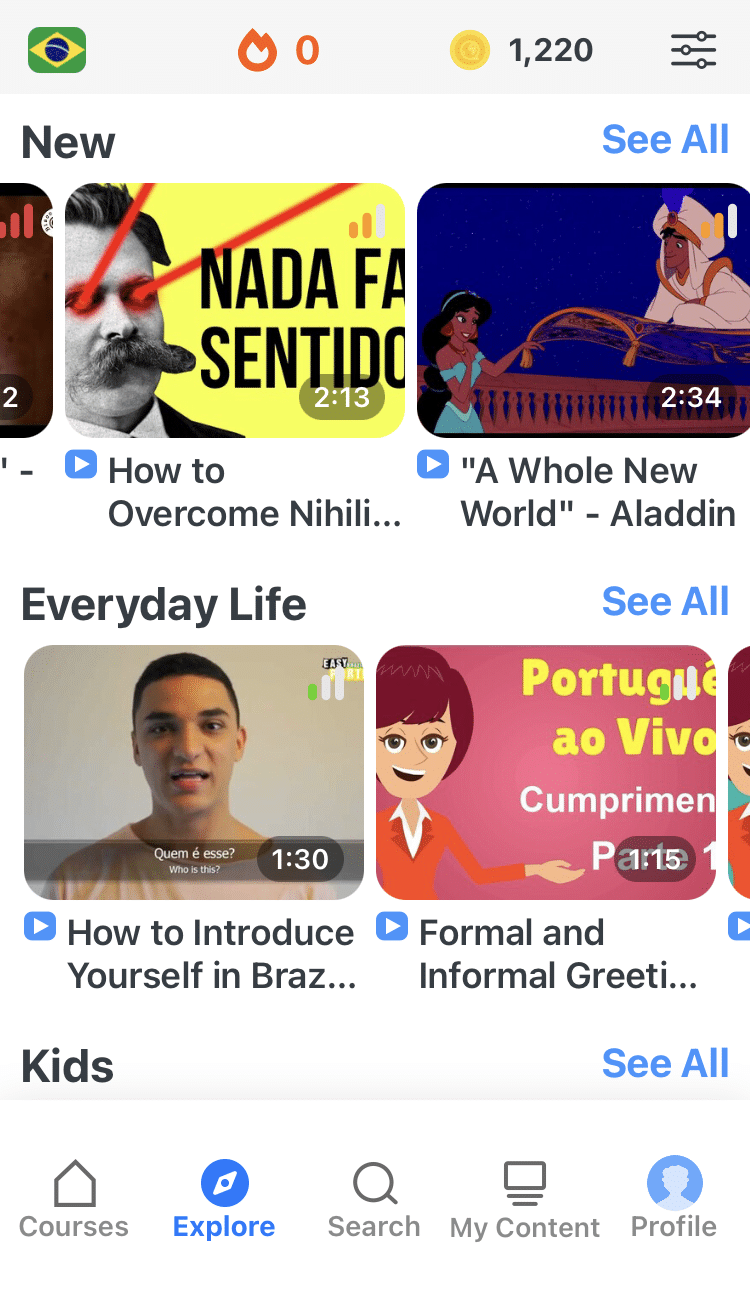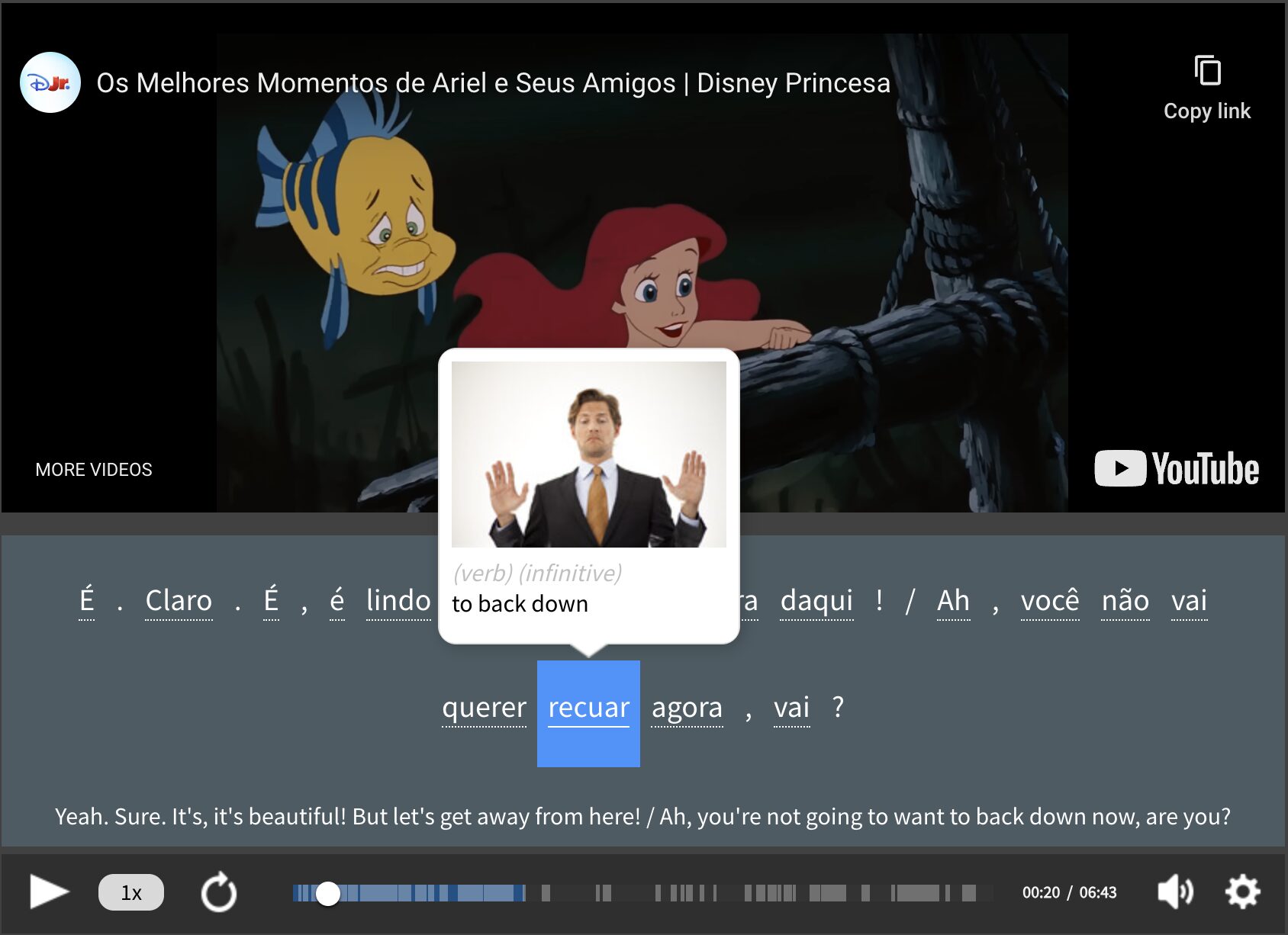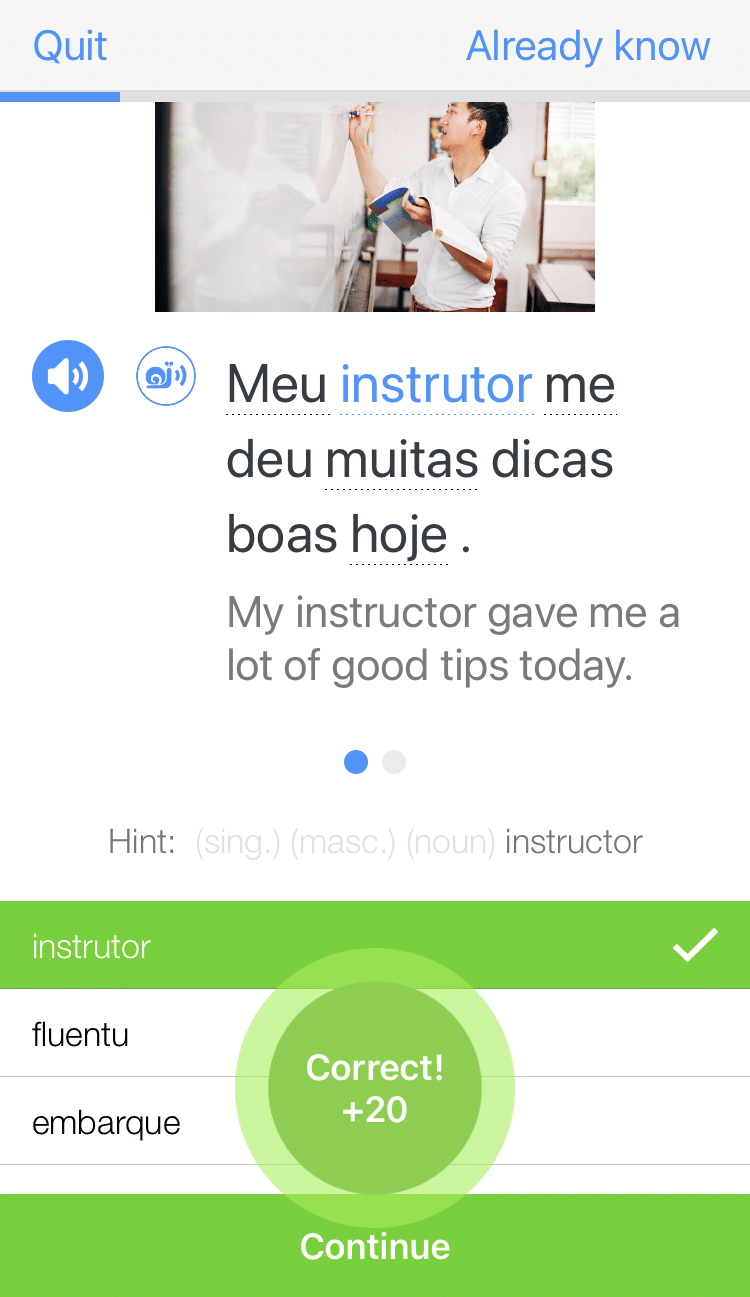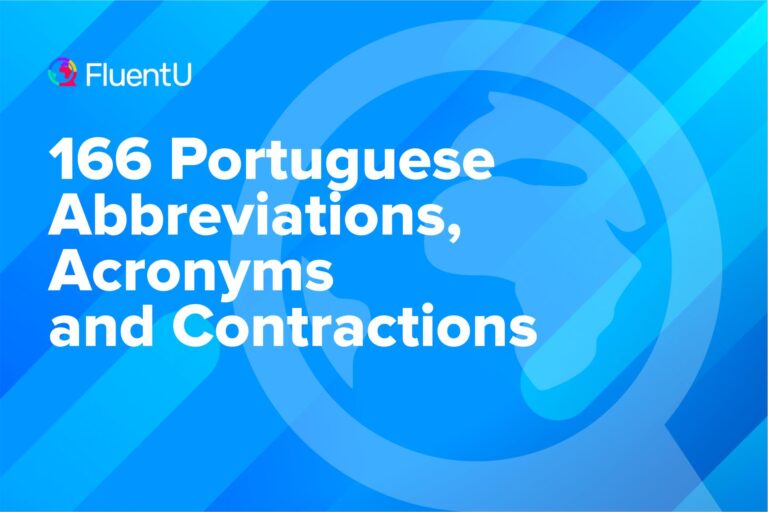Should I Learn Brazilian or European Portuguese?

If you’re reading this, you’ve probably done a fair bit of groundwork and decided to learn the wonderful Portuguese language. Now, you just need to decide whether the Brazilian or European accent is going to be the most beneficial, right?
This post will help you understand some of the reasons you might choose one over the other—and, of course, the pros and cons of learning each variety.
Download: This blog post is available as a convenient and portable PDF that you can take anywhere. Click here to get a copy. (Download)
1. Important Factors to Keep in Mind
Your Personal Motives
Why Portuguese, exactly? Did you choose it because you want to travel to Brazil or Portugal? Are you going to either country for business reasons? Were you simply attracted to the respective cultures?
Whatever sparked your interest in the language will have a direct impact on which dialect you choose to learn. If you’ve got a soft spot for classic literature, the European Portuguese variety might be the best option.
If you’re in love with samba and carnival, Brazilian Portuguese might just be right up your alley. These are just a few examples, and you’ll see more prop up as we go into further detail about each variety of the language.
Availability of Resources
The next factor to consider concerns finding the right study materials.
Brazil has a larger population than Portugal—and, as such, many more native speakers. To put things into perspective, Portugal is a country with 10.3 million inhabitants, whereas Brazil is home to more than 200 million!
This has a direct impact on availability of content. It’s much easier to find resources for Brazilian Portuguese learners than it is for those studying the European variety.
Thanks to the internet, however, there are quite a few options around. Compare these if you need more ideas of how to get started:
- Textbooks: “Living Language Brazilian Portuguese” is a popular option, as is the Euro-centric “Bom Dia” textbook series.
- Translator Apps: iTranslate caters to both dialects, whereas Google Translate and Microsoft Translator are better suited for Brazilian Portuguese.
- Immersion Software Programs: The highly acclaimed Rosetta Stone method prioritizes Brazilian Portuguese, while its top competitor Pimsleur has options for both dialects. You can also find authentic Brazilian Portuguese videos on the FluentU program, which provide an authentic language learning experience directly from native speakers.
FluentU takes authentic videos—like music videos, movie trailers, news and inspiring talks—and turns them into personalized language learning lessons.
You can try FluentU for free for 2 weeks. Click here to check out the website or download the iOS app or Android app.
- Audio resources: Practice Portuguese is a good option for learning the European variety through podcasts and audio lessons. For a Brazilian alternative, try the podcast courses from PortuguesePod101.
Your Future Aspirations
Thinking about your future plans might also help you figure out which Portuguese variety will work best for you.
For instance, if you want to land a job in the United Nations, you’ll likely need to know how to speak Continental Portuguese as its operations are based in Europe. Of course, if you’re searching for a United Nations role that is stationed in Brazil, you would be better off knowing the other dialect.
For jobs in North American enterprises, Brazilian Portuguese is going to be favored since the country has a bigger economic/trading base. In the professional setting at least, it all depends on where you’re most likely to end up working.
2. The Difference Between Brazilian and European Portuguese
There are quite a few differences between the Brazilian and Portuguese dialects. Check out this video and my notes below to help you understand them better:
Accents
Brazilian Portuguese is spoken more slowly and with open vowels, while European Portuguese may sound quite rushed and mumbled to an untrained ear. For that reason, many people are inclined to believe the former is easier to master than the latter.
Does accent hinder communication between the Brazilian and European Portuguese speaker? Though there are many different opinions, not too much.
Some Brazilians might need to listen to the Lusophone accent a couple of times to get used to it—but that’s mostly because Portuguese people speak a bit faster. Other than that, they can converse with one another despite the dialectical differences.
This YouTube video compares the European and Brazilian Portuguese dubs for Disney movies and will give you a clearer idea of the differences we’re talking about. You’ll notice that even basic everyday sentences are constructed slightly differently.
It’s worth noting that Brazilian Portuguese has more regional accents. This won’t hinder your understanding of the language in any way, but each state has its own distinct little twang. For instance, the way Rio de Janeiro natives pronounce the letter “s” at the end of a word is quite similar to the way European Portuguese speakers do (with a distinctive “sh” sound).
European Portuguese has its own regional quirks, too. The way the letter “s” is pronounced tends to differ between the regions—making, for instance, Northern and Central-Southern Portuguese accents quite distinct from one another.
Spelling
While it’s true that recent spelling reforms have made an effort to unify both types of Portuguese, a handful of orthographic differences prevail. Take a look at these common examples:
- The spelling for “fact” is fato in Brazil and facto in Portugal.
- The word for “reception” in Brazil is written as recepcão, whereas in Portugal it is receção.
As you can see, the differences are quite subtle. But when it comes down to communicating in a specific region, they do stand out.
Formal and Informal Speech
European Portuguese is considered the more formal of the two. It’s hard to explain the nuances to someone who is yet to learn the basics, but here are some examples of how speech differs in each dialect:
- In Brazilian Portuguese, the word você is most commonly used for “you” in an informal setting, while in Portugal tu is used in the same context. In Portugal, the word você is viewed as quite crude—as a result, they tend to remove the second person pronoun in less casual situations (with acquaintances or people they just met) and conjugate the verb in the third person singular.
- When describing an action, Brazilians use the gerund, “estou fazendo” for “I am doing,” while the Portuguese use an infinitive form, “estou a fazer” for the same. The latter is much less direct, and could be loosely translated as “I am taken to doing.”
Vocabulary
Putting it simply, Brazilian Portuguese combines words from South American indigenous languages, while European Portuguese is more closely aligned with traditional Romance languages like Spanish. Both dialects evolved according to their geographic locations and history—and this is evidenced in some vocabulary differences.
In Brazil, for example, the word for “pineapple” is abacaxi, which comes from the indigenous Tupí language. On the other hand, in Portugal it’s ananás—which can be seen in other languages in Europe.
Actually, many everyday words are completely different. Here are a few notable examples:
- A “cup” in Brazil is xícara; in Portugal it’s chávena.
- Want to ride the train? In Brazil, you’ll take the trem, while in Portugal you’ll hop on the comboio.
- Finally, here’s one that will leave you scratching your head. When in a Portuguese kitchen, grab a bite to eat out of the frigorífico (i.e. the refrigerator). In Brazil, frigorífico is a slaughterhouse—what you really need to do is open up your geladeira.
This YouTube video will give you a good introduction of how each language variety has evolved over time.
3. Main Advantages of Brazilian vs European Portuguese
If you’re still tossing up between the two, don’t worry! There’s no rush in making the decision.
If it helps, you can always try both varieties out for size. Lots of Portuguese apps offer a good introduction to both languages—allowing users to compare and contrast them in a more practical manner.
But to sum things up nicely, we’ll give you a quick overview of the advantages that come with each dialect.
Brazilian Portuguese
- Best for traveling, living in or working in Brazil
- An easier, more informal version of the language
- Can use your Portuguese linguistic skills to break into a larger economic market
- Steeped in South American cultures and traditions
European Portuguese
- Best for traveling, living in or working in Portugal
- Is more helpful for a wider set of Portuguese-speaking countries, as most of them tend to be more closely aligned to the European accent
- Is more formal and traditional
- Encompasses the European experience—from its ancient history to the Mediterranean lifestyle
In the end, the choice is entirely yours.
Whether you opt for Brazilian or European Portuguese, we know you’ll have a blast working your way towards fluency!
Download: This blog post is available as a convenient and portable PDF that you can take anywhere. Click here to get a copy. (Download)
And One More Thing...
If you're like me and enjoy learning Portuguese through movies and other media, you should check out FluentU. With FluentU, you can turn any subtitled content on YouTube or Netflix into an engaging language lesson.
I also love that FluentU has a huge library of videos picked specifically for Portuguese learners. No more searching for good content—it's all in one place!

One of my favorite features is the interactive captions. You can tap on any word to see an image, definition, and examples, which makes it so much easier to understand and remember.
And if you're worried about forgetting new words, FluentU has you covered. You'll complete fun exercises to reinforce vocabulary and be reminded when it’s time to review, so you actually retain what you’ve learned.
You can use FluentU on your computer or tablet, or download the app from the App Store or Google Play. Click here to take advantage of our current sale! (Expires at the end of this month.)










